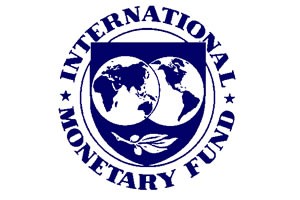International Monetary Fund (IMF) has deteriorated its outlook on the Armenian economic growth - in 2015 it will plummet by 1% amid 6.4% escalation of inflation against 3.4% GDP growth and 3.1% y-o-y inflation. It is mentioned in the May 18 report entitled " Regional Economic Outlook Update for the Caucasus and Central Asia" that in 2016 Armenia's GDP dynamics will make 0 amid 4% inflation.
According to IMF expectations, in 2015-2016 the current account balance will remain on the same negative level in 8.6% GDP against the negative 9.2% in 2014. In 2015 the budget gap will increase up to 4.5% from 2.1% GDP in 2014 with further reduction till 2.8% GDP in 2016.
In total IMF forecasts slow GDP growth Caucasus and Central Asia - CCA - in 2015 to 3.2% from 5.3% in 2014, however, in 2016 the growth will accelerate up to 4.2%. According to IMF estimations, the inflation in CCA region will make to 7% in 2015 from the 5.8% in 2014, in 2016 it will make 6.6%. From the positive 1.7% in GDP in 2014 the current account balance will change to 3.4% deficit in 2015 with minus level falling to 2% in GDP in 2016. The budgetary balance will shift from 1.1% 2014 GDP surplus to 3% deficit in 2015 with reduction of deficit in 2016 up to 1%. The external pressures from the twin shocks of lower oil prices and Russia's slowdown, as well as ruble depreciation and dollar appreciation, suggest that greater exchange rate flexibility will be needed for some countries to absorb the shocks, retain competitiveness in the face of upward pressure on the real exchange rate, and prevent a drain on reserves. A continued depreciation of the ruble would further depress the value of remittances from Russia (Armenia, Kyrgyz Republic, Tajikistan).
IMF experts remind that declining exports and remittances as well as ruble depreciation have put pressure on the CCA currencies (Figure 2), resulting in Turkmenistan and Azerbaijan devaluing their
currencies in early 2015. Meanwhile, Armenia, Georgia, Tajikistan, and the Kyrgyz Republic have allowed depreciation against the U.S. dollar to a varying degree to protect international reserves and
support the domestic currency value of remittances. As a result of the strong pass-through, coupled with credit growth (Kyrgyz Republic), inflation will reach double digits in the Kyrgyz Republic and Tajikistan - 9% and 6.2% respectively. In other countries, inflation will remain contained - 0.6% in Azerbaijan, 1.7% in Kyrgyzstan. In 2015 Tajikistan's GDP will make 3% and 2% in Georgia and Kazakhstan, 9.5% in Uzbekistan, 7.9% in Azerbaijan, 7.9% in Turkmenistan, 6.4% in Armenia, 5.2% in Kazakhstan. The lowest inflation rate is forecast in Georgia - 3%.
The report reads that oil exporters are expected to use their large buffers to provide countercyclical stimulus to the economy over the near term, while in the CCA oil importers, domestic demand is
weakening with declining remittances. Further reforms of business regulations are urgently needed. The current economic environment is testing for banks, as financial systems are facing pressures from
multiple sources. Currency depreciations, against the backdrop of dollarized banking systems and foreign currency lending to unhedged borrowers, increase credit and solvency risks. Slowing economic
growth heightens the credit risks, particularly in countries where bank governance and underwriting standards are weak and directed lending is common. Supervisors will need to intensify surveillance of
the financial systems, especially in countries where nonperforming loans are high (25 percent in Kazakhstan and 27 percent in Tajikistan) or rising (for example, Armenia) and capital adequacy
ratios are declining. Over the medium term, deep structural reforms, particularly to improve the business climate and governance, would raise prospects and make economic growth more inclusive and
diversified. Intensified efforts in these areas would create jobs, alleviate poverty, and diversify economies away from reliance on commodity exports and remittances.
To note, according to IMF methodology, CCA region includes Armenia, Georgia, Azerbaijan, Kazakhstan, Kyrgyzstan, Tajikistan, Turkmenistan, and Uzbekistan. Armenia, Kazakhstan and Kyrgyzstan are EEU members along with Russia and Belarus. In 2015 IMF worsened the economic outlook in Russia from minus 3.0% to minus 3.8% GDP. According to statistics, in 2014 Russia had 0.7% economic growth.
To remind, earlier on EBRD damped its forecast on Armenia's GDP growth in 2015 dropping it from 3.5% to 0 and only after to -1.5%. International financial bodies have damped their forecasts on the
Armenian economic growth in 2015: EDP forecasts a 3.8% GDP growth, IFM - 0% stagnation, ADP- 1.6% GDP growth, American rating agencies have their own estimations: Fitch forecasts moderate recession because of the situation deterioration in Russia, while Moody Agency forecasts a 2.3% growth. The RA Central Bank estimates the country's 2015 economic growth 0.4- 2% rolling back the previous 3.2-3.5% indicators.


